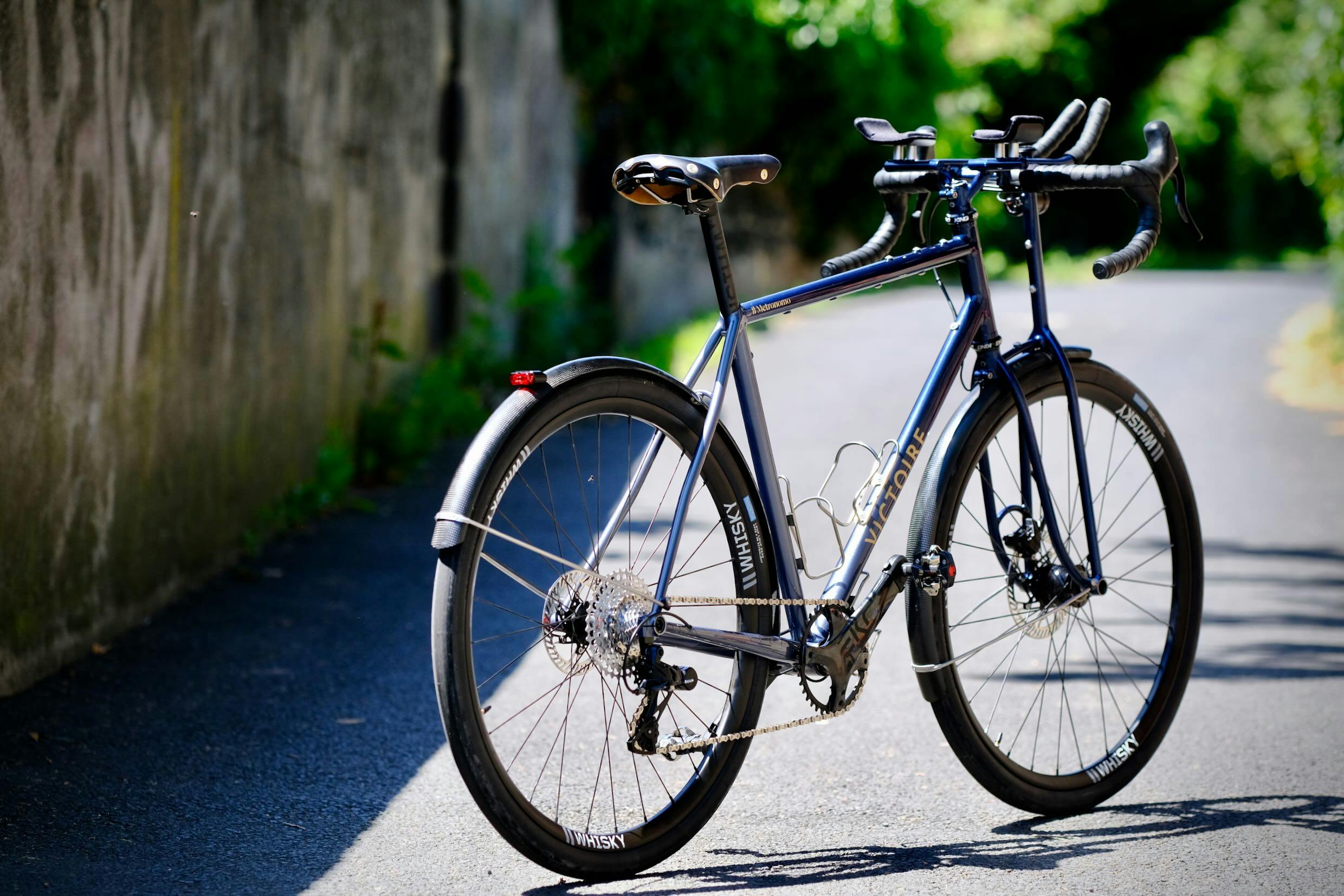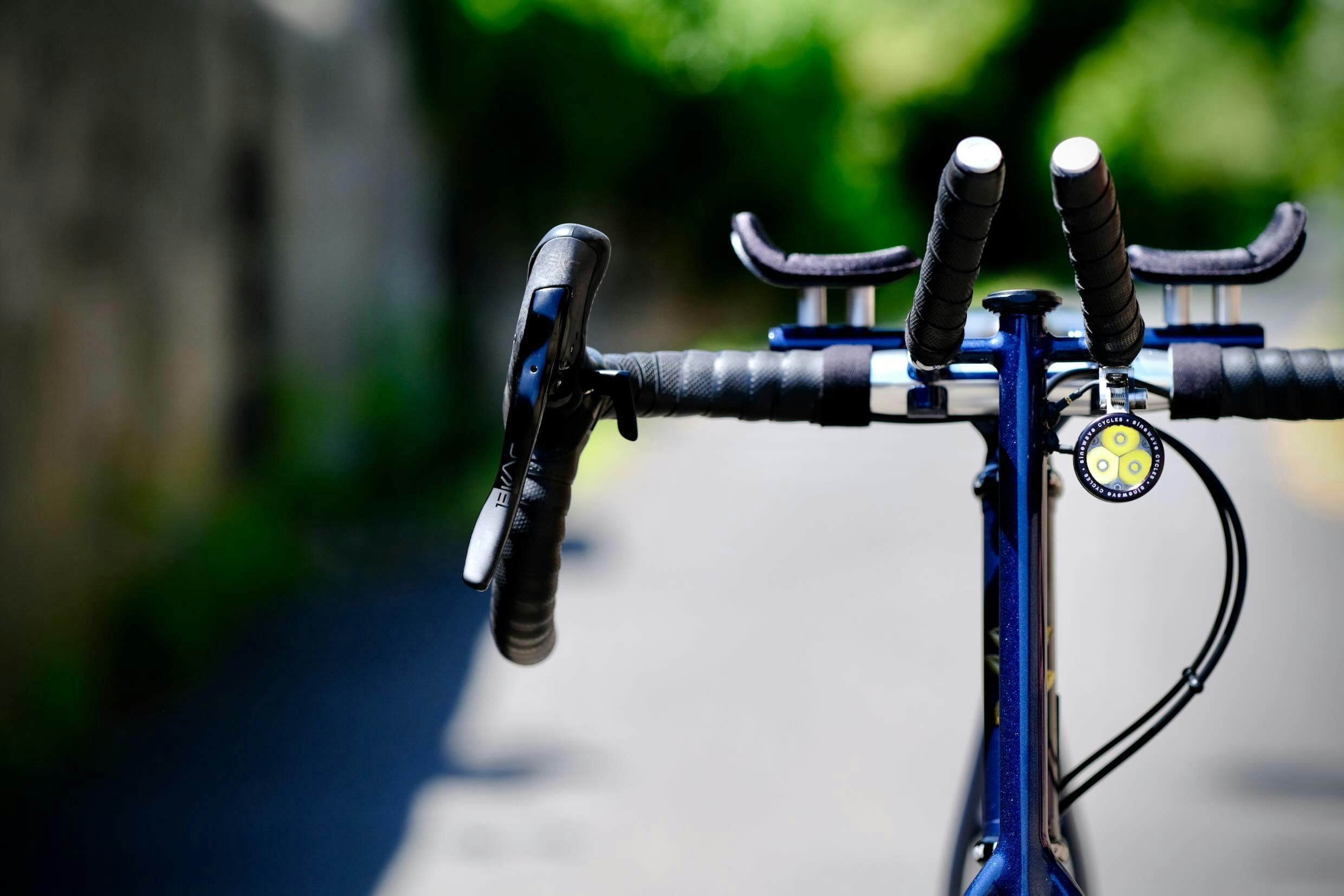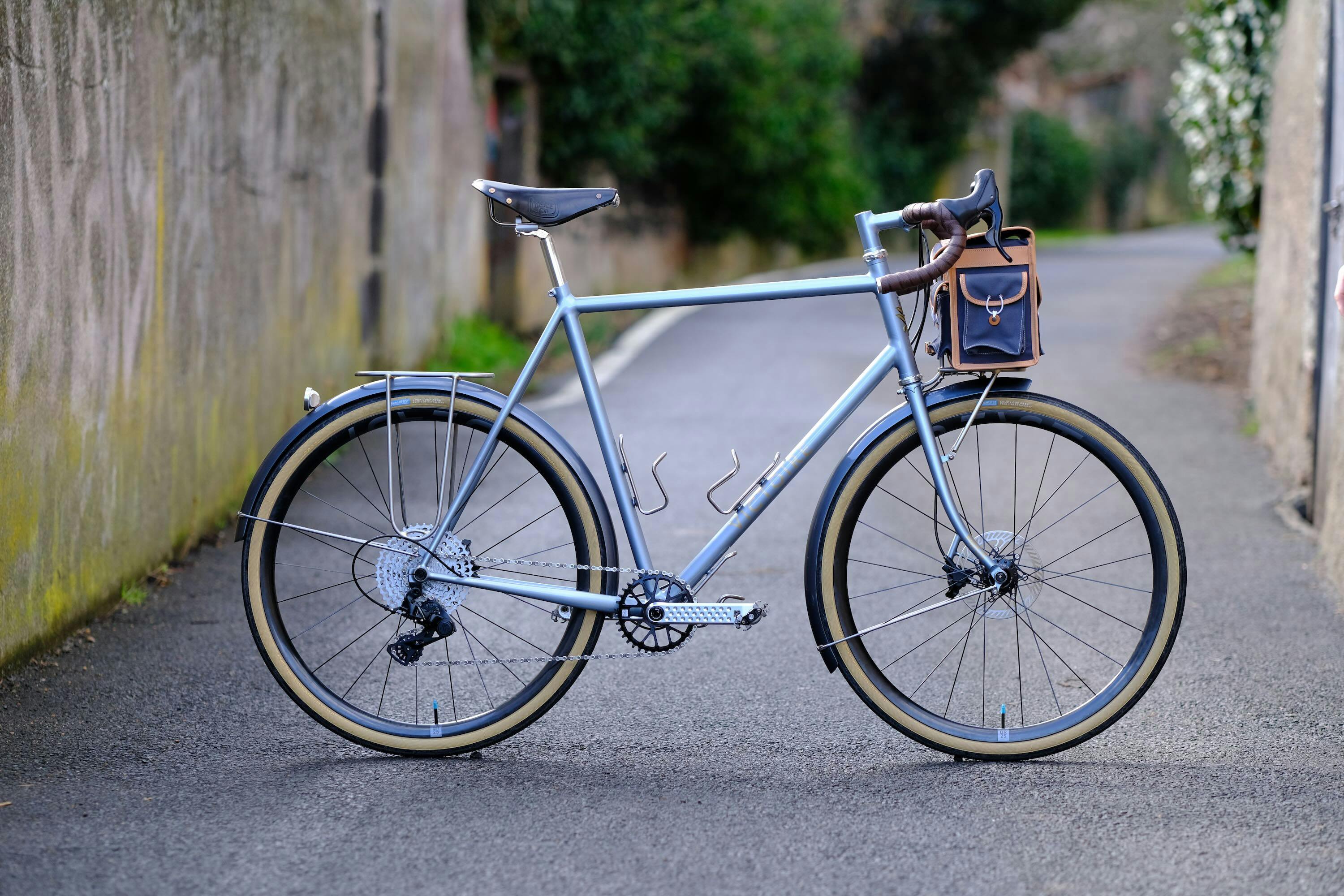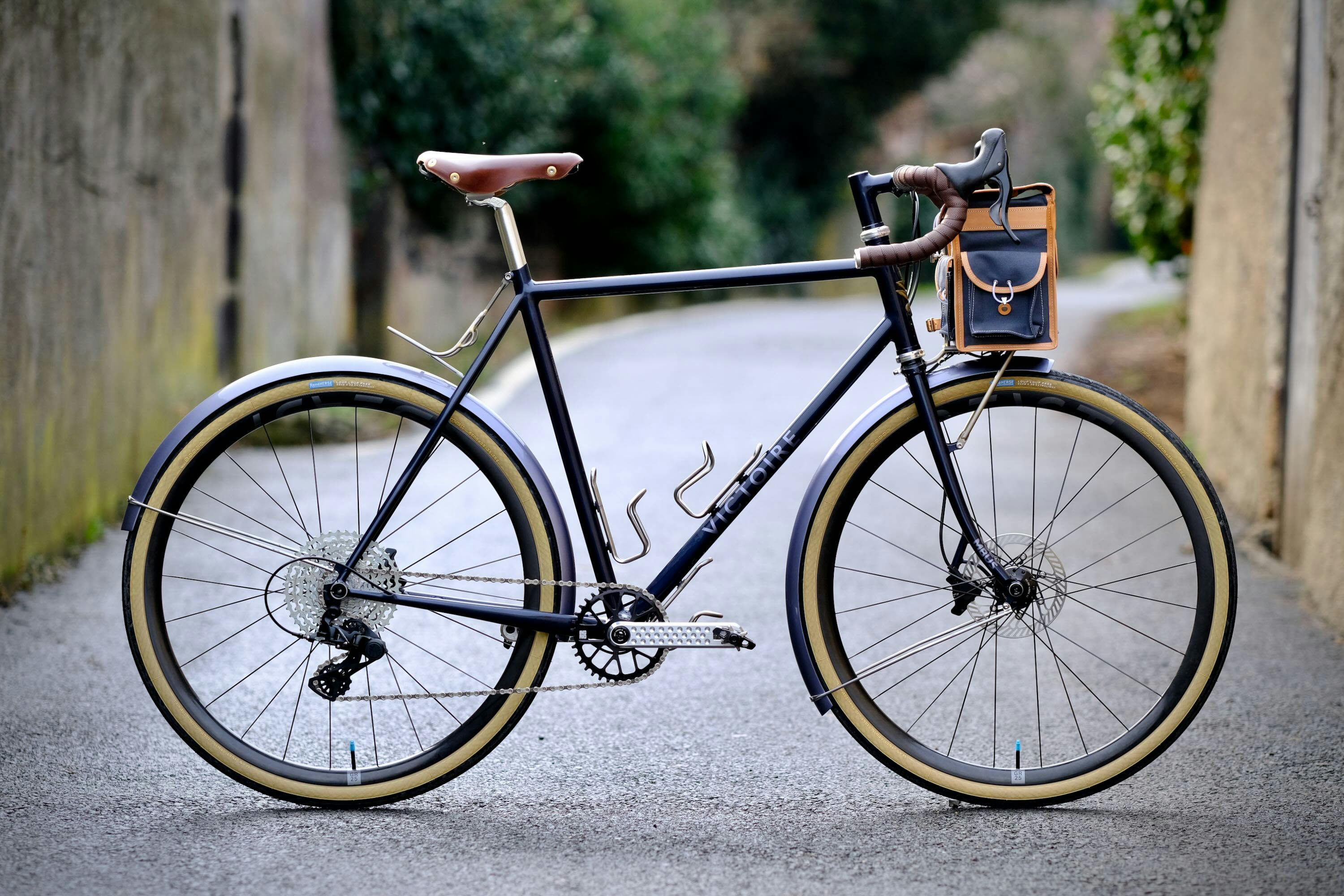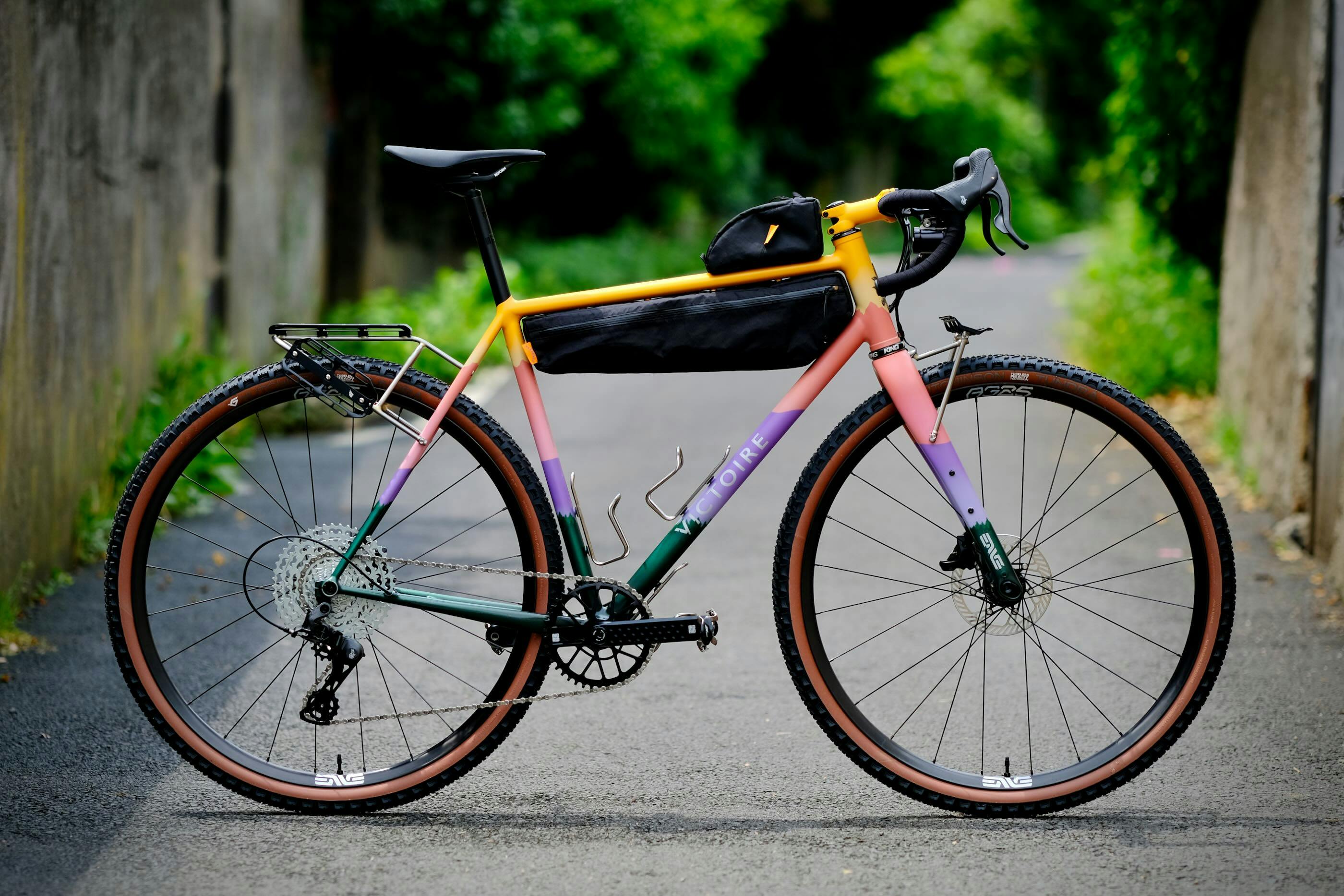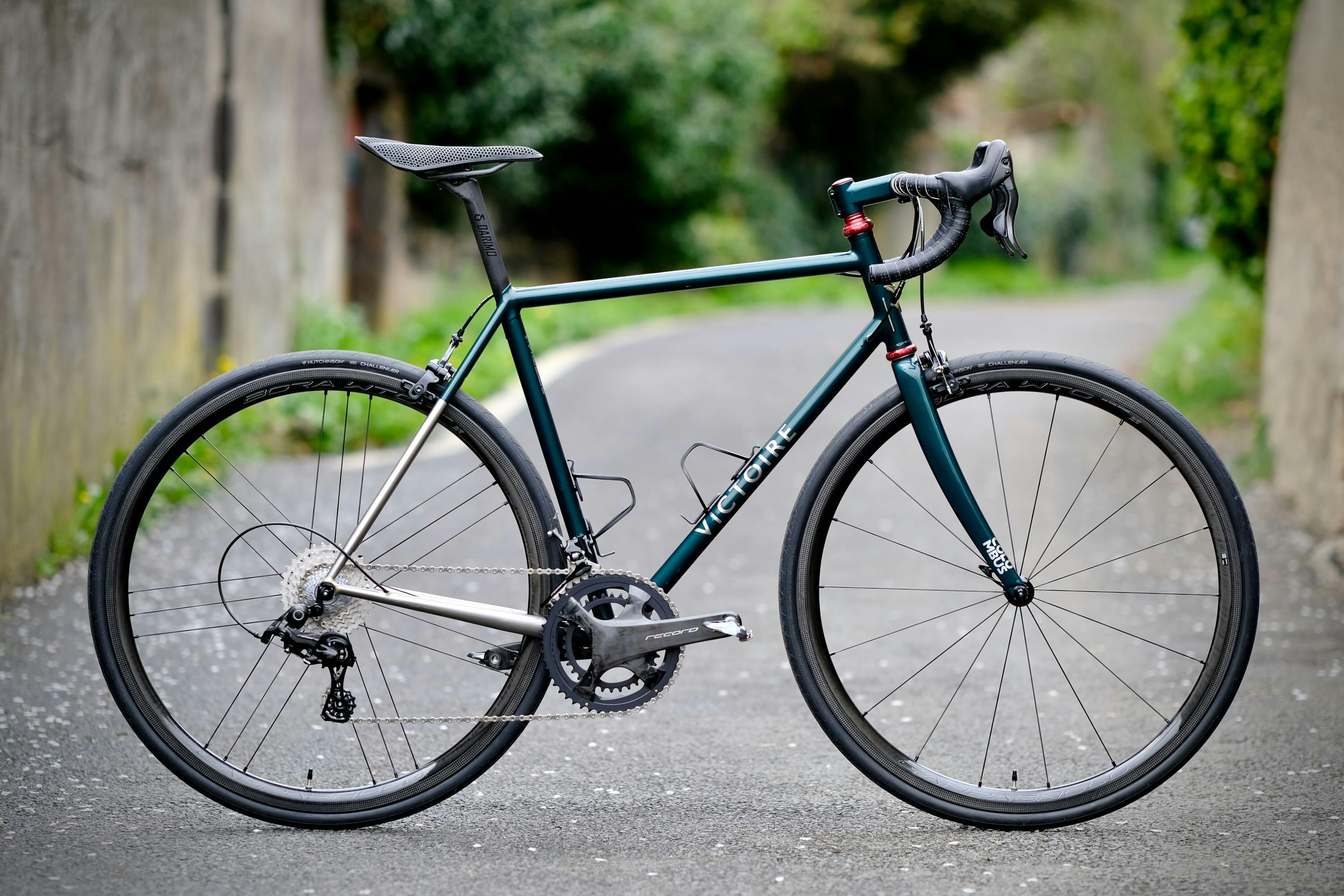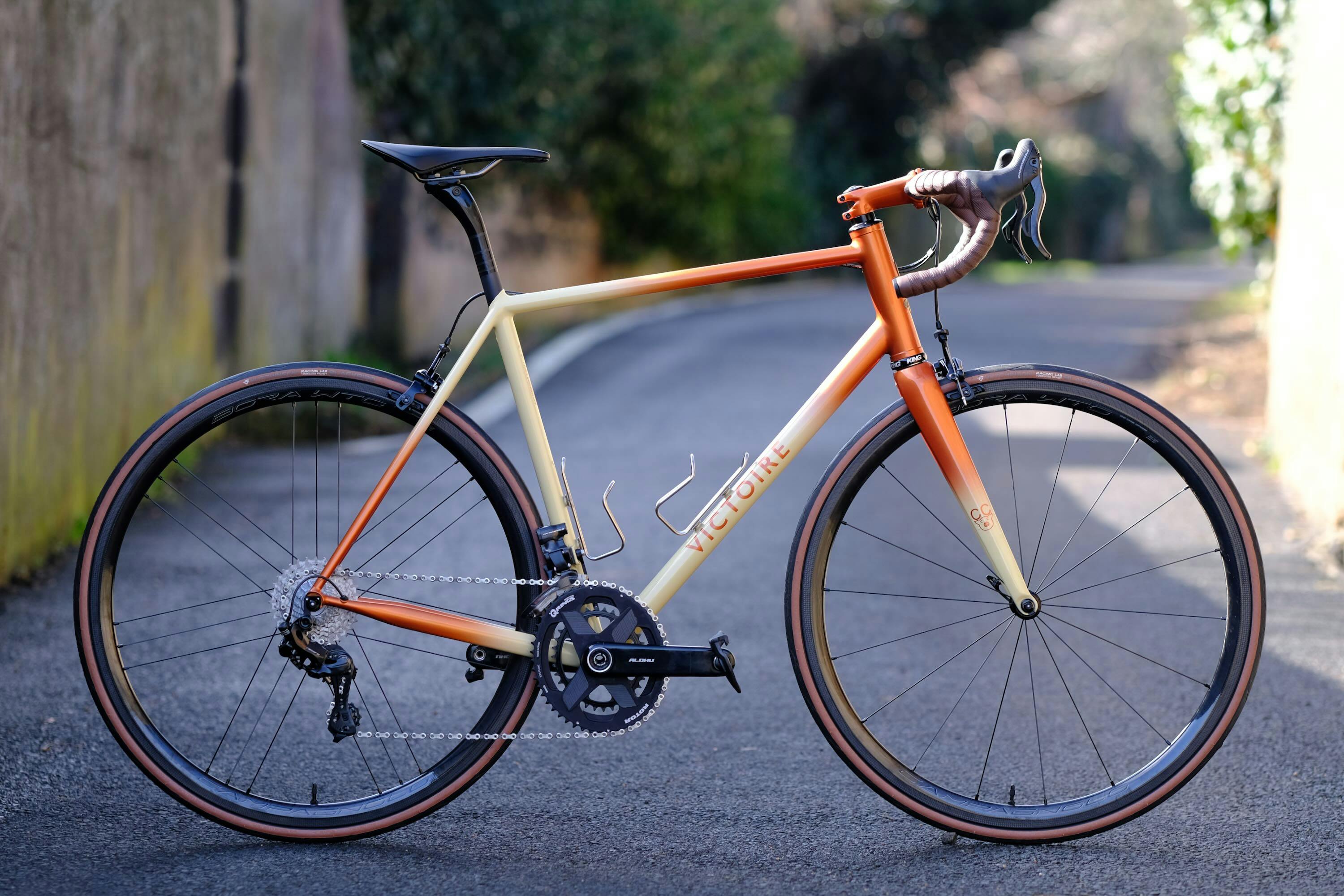Philippe's Metronome
Philippe is a great fan of long-distance races: when he contacted us, he had already participated in 6 editions of the Paris-Brest-Paris. This legendary 1200-kilometer Audax ride takes place every 4 years and is one of the oldest cycling races in the world. To cover this distance within the official time limit, Philippe needed a comfortable ride perfectly adapted to his morphology. We worked with him to design Victoire n°540, an elegant machine that he debuted on his seventh participation in cycling's finest brevet.


This isn't the first time we've created a bike specifically for the Paris-Brest-Paris. Back in 2019, we designed a bike specifically for this race. We presented it at the Concours de Machine, which we won! We drew on our experience with Victoire n°413 to meet Philippe's needs.
A lot of work went into designing and building the fork, which took longer than the frame.



The frame is a classic Victoire design, with a pure randonneuse geometry. The seat-tube clamp is integrated into the seatstays, the disc brakes are standard flatmount and the bike features fender mounts for optimum comfort during the race.
We've introduced a number of innovations to further enhance the bike's performance and comfort. We've selected small-diameter tubes to limit the bike's weight and improve shock and vibration absorption.
In addition, the top tube is tapered and ovalized towards the bushing. This technical feature stiffens the cockpit laterally: riding is greatly simplified, even with the rider's weight concentrated forward when using aerobars.


The bottom bracket is a T47. Larger in diameter than its BSA ancestor, it allows the electrical wiring for the lighting to be routed inside: the bike's lines are more streamlined, and reliability is enhanced.
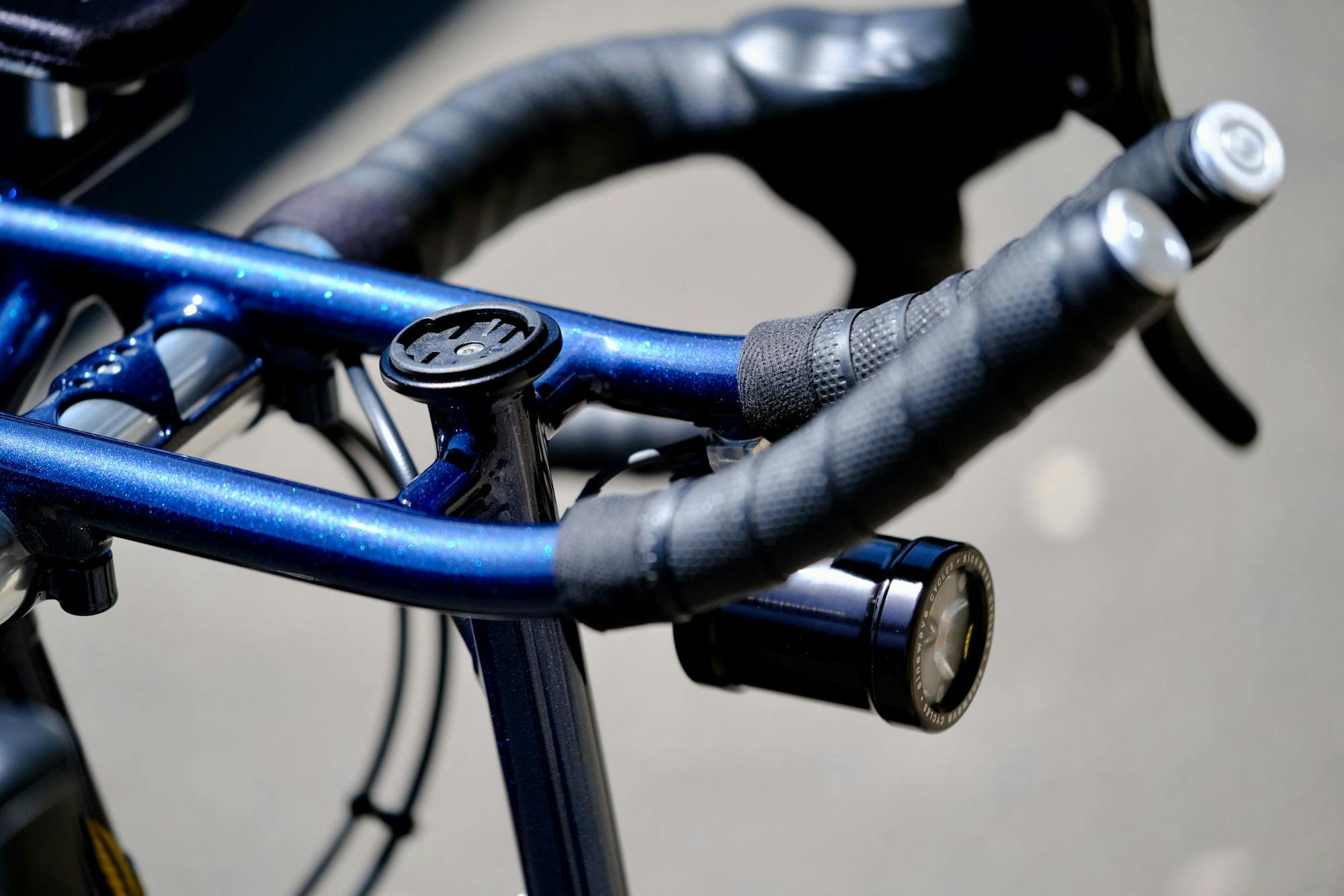


The fork is the most important part of the bike, both aesthetically and functionally. It defines its look and optimal use. We drew our inspiration from our winning bike in the 2019 Concours de Machines, the Victoire n°413.
We designed the fork, stem and aerobars to work together efficiently. This holistic approach makes it possible to calculate precisely the physical constraints imposed on this part by the rider's weight, pedaling action and steering. We therefore selected thin tubes for low-stress areas, and added strength where necessary. The total package is both stronger and lighter than a similar carbon package.
Another very useful advantage for long-distance races: this set makes a natural rack for carrying food and equipment to spend almost 100 hours on the handlebars, in total autonomy.

The fork directly integrates the aerobars, as well as a support for attaching a pannier. By multiplying the uses of the same set of parts, we keep the weight down. The frame is light, with a 36mm bushing, yet highly rigid, a vital element in ensuring that you don't burn up too much energy during regular, extremely long efforts.
The position on the extensions was carefully studied and defined with Philippe during the bike fitting, a crucial step in the design of a Victoire bike.



The Paris-Brest-Paris is a race that lasts several days, so riding at night is inevitable. All the machines entered are equipped with lights, which serve both to see and to be seen. Julien from Jolie Rouge gave us a hand by making frame lugs with the SL system from Son. This allows the lights to be powered by the dynamo without the need for connections: the wheel can be dismounted and remounted without difficulty. The front light is fixed under the aerobars.
A small challenge for Matthieu, the framebuilder in charge of the project: fixing the brake between the two legs of the Truss fork. To do this, he had to use eyelets usually reserved for rear Flatmount calipers. The stainless steel studs go right through, and this mounting method is more compact than the usual front brake mounting.
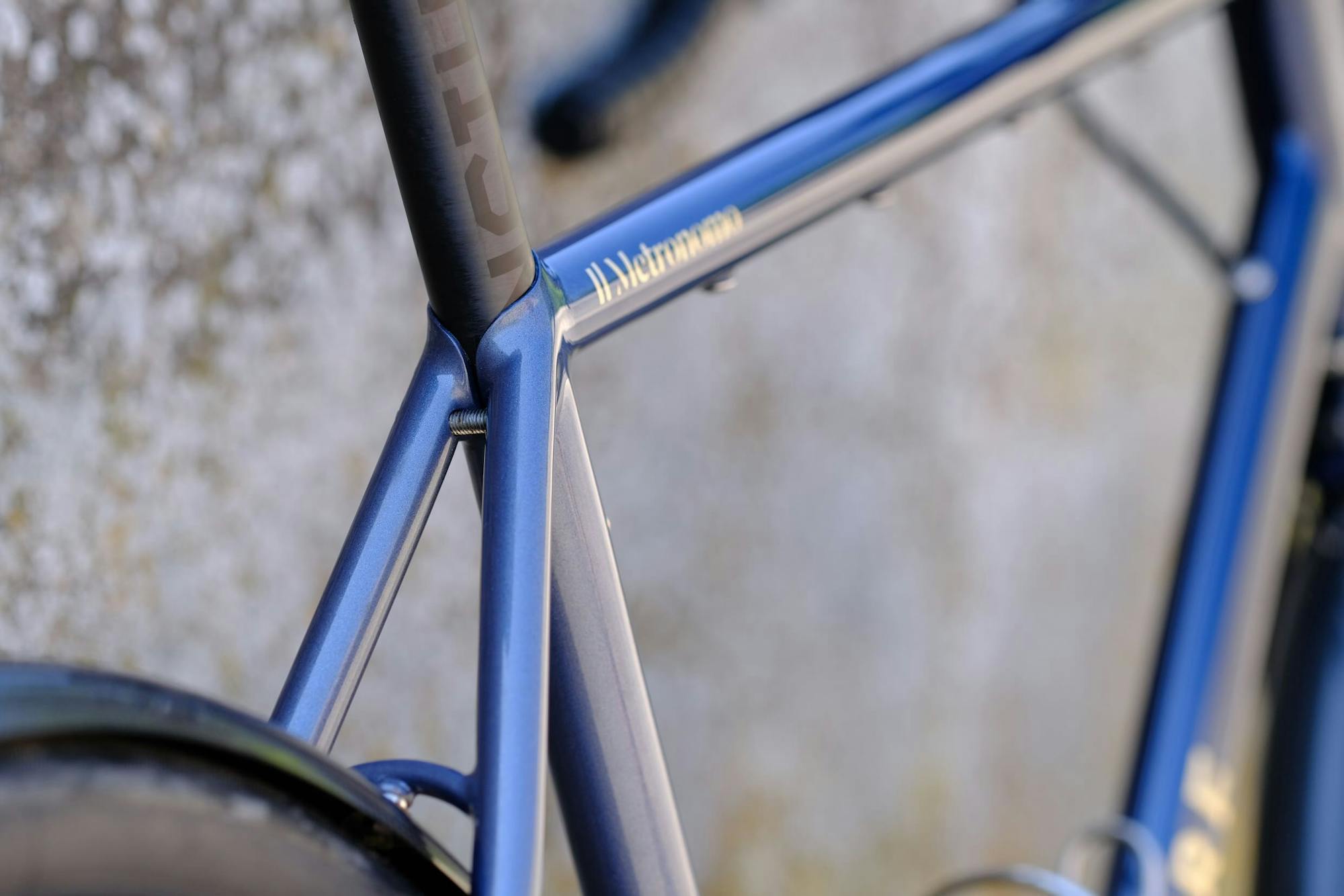
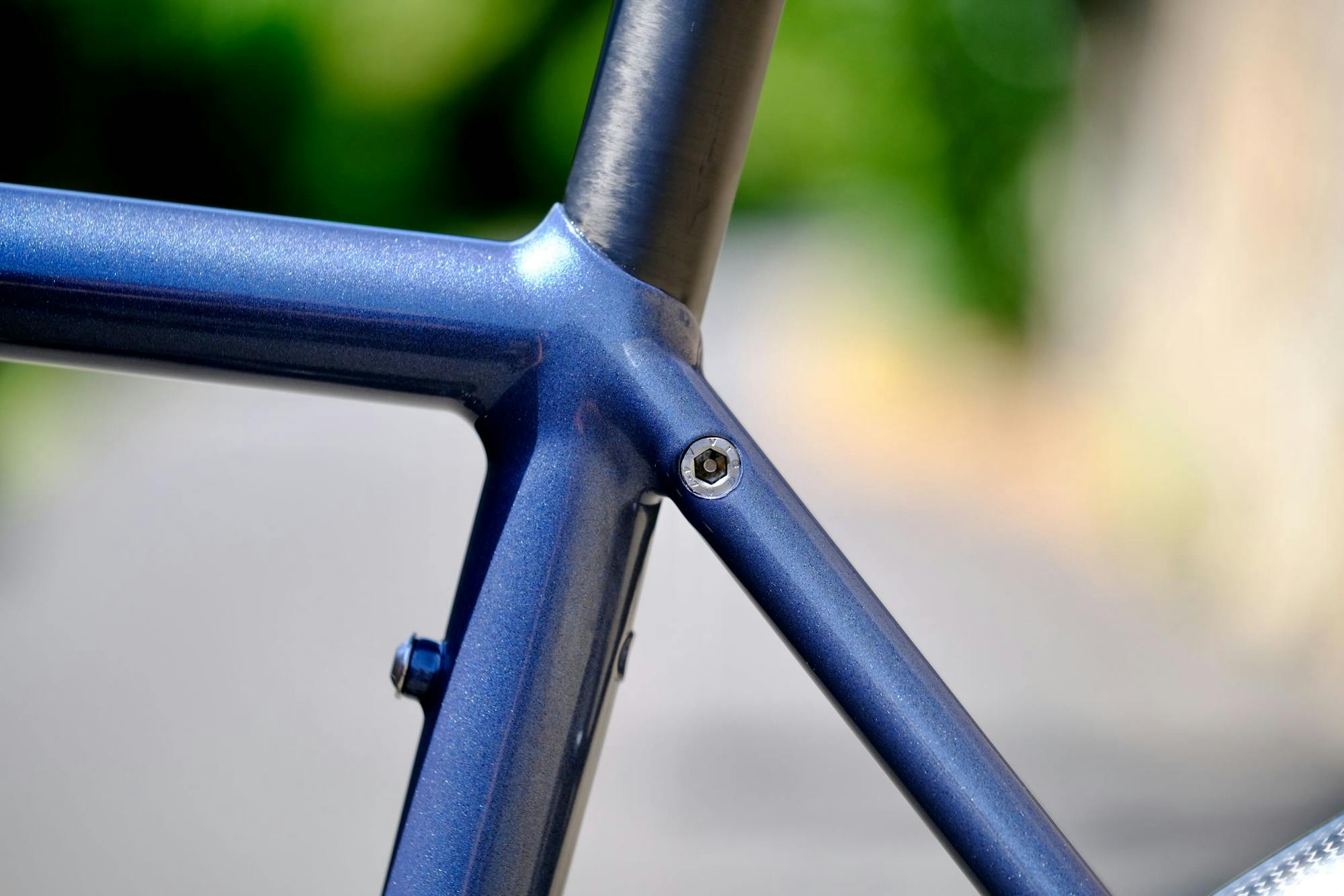


The saddle clamp in the seat stays is certainly one of Victoire's most iconic options. It simplifies the appearance of the junction area between top tube and seat tube, and has become one of our signatures.
Designed for use on long-distance events such as the Paris-Brest-Paris, the Victoire n°540 has all the eyelets needed to fit fenders: even the most hardened diagonalists prefer to stay dry!
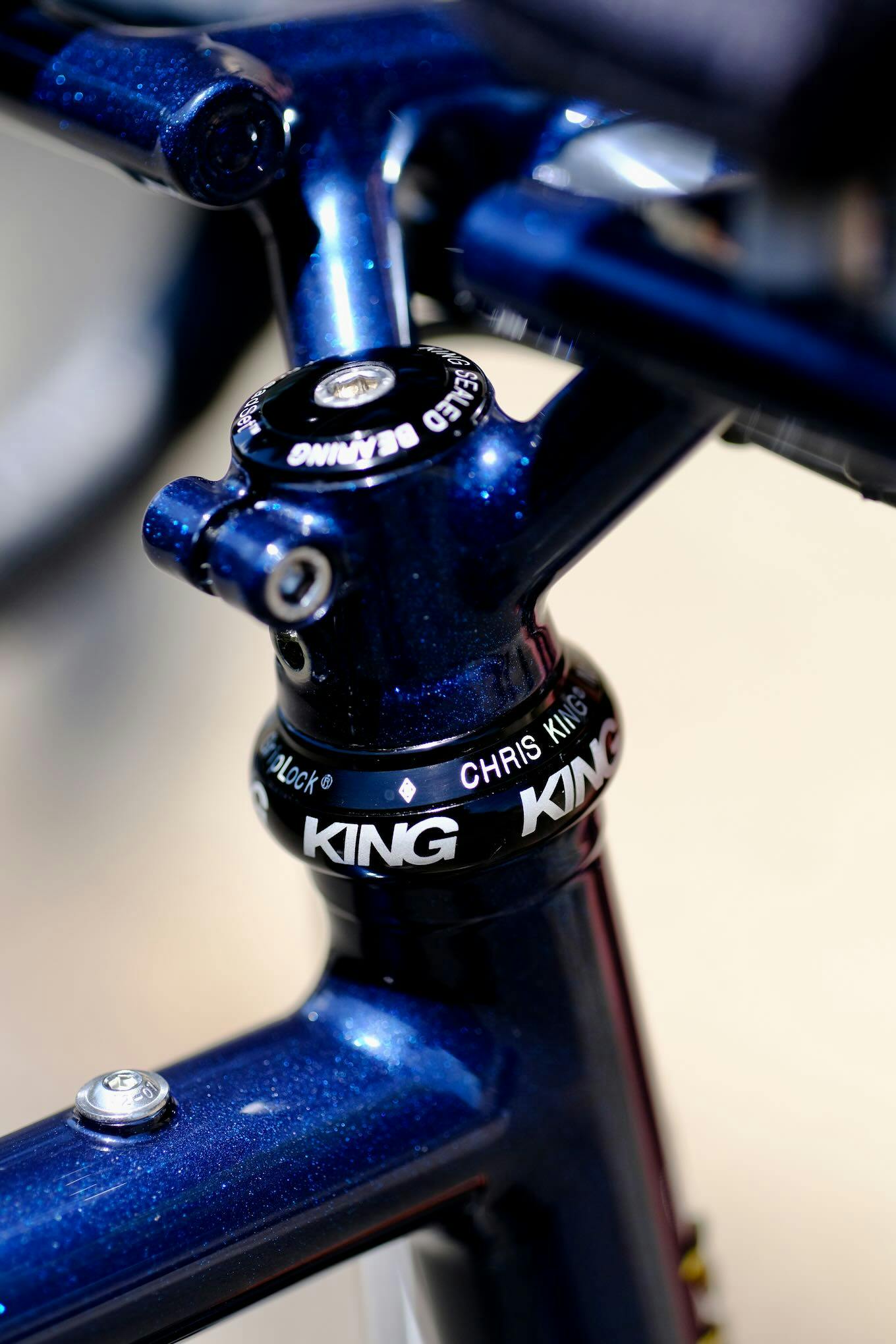
The stem is totally different from the usual models. Appearing very short, it is used here to connect the aerobars (which also support the handlebar) to the fork steerer tube.
The fork steerer tube is not attached to the fork legs, but rather to the top and bottom of the headset.
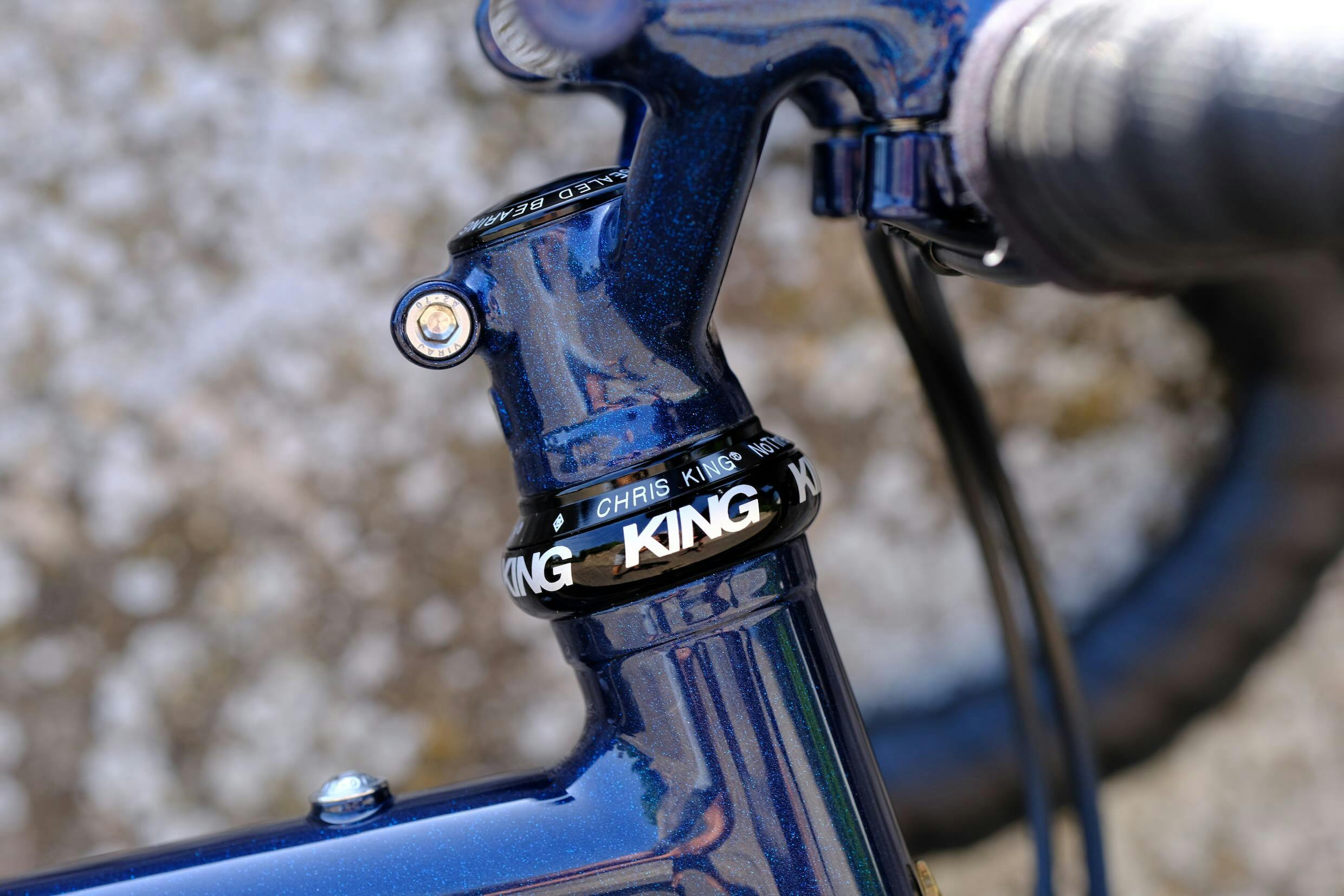

The elbow supports for aerobars are fixed to an adjustable interface, so that Philippe can perfectly adapt his position. After dozens of hours in the same position, the slightest compression can become very painful, even unbearable. These brackets carry a significant proportion of Philippe's weight, so they need to be optimally positioned.
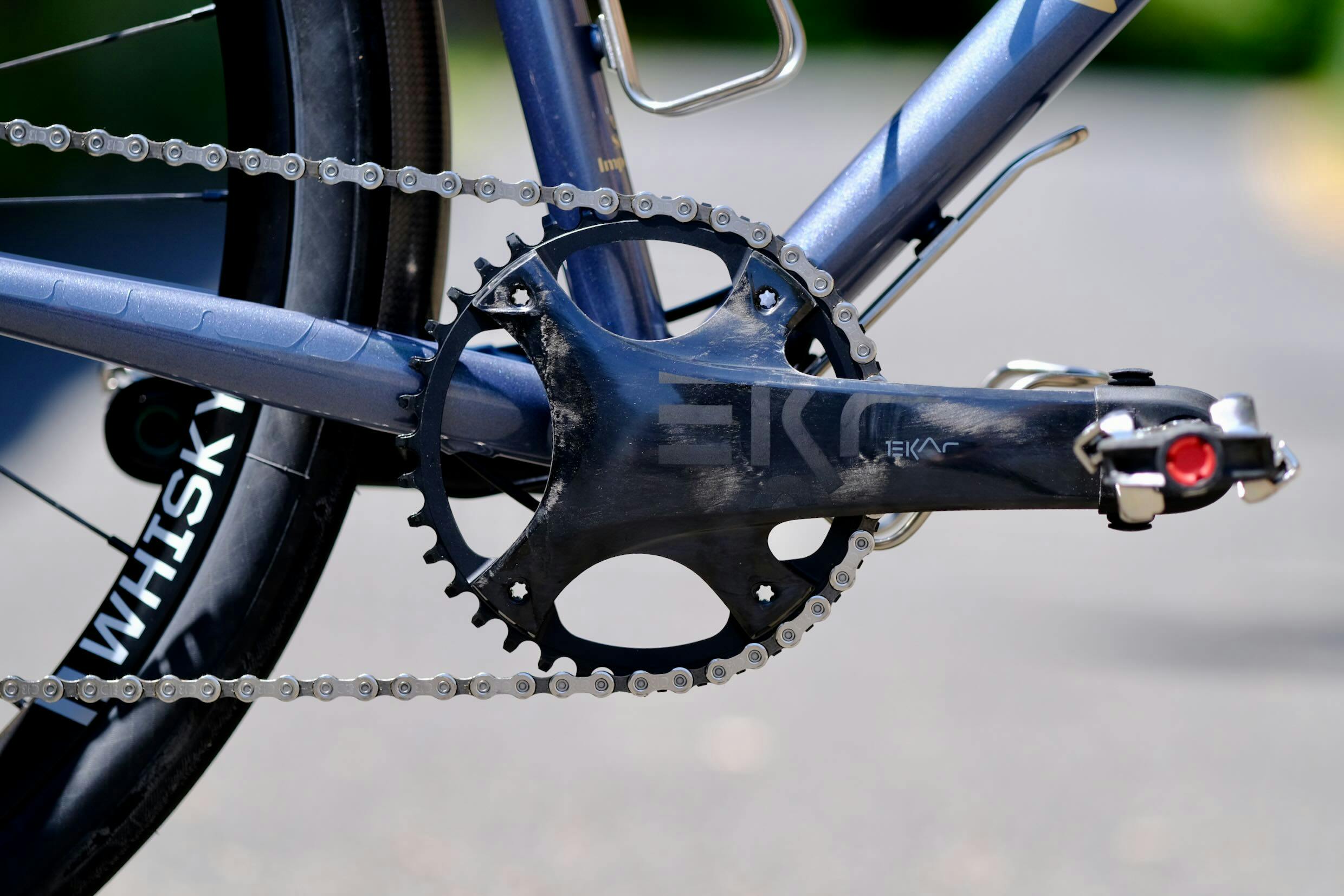

Endurance racing requires both a very comfortable machine and reliable, proven components. The wheels are the classic touring wheel diameter, 650B. They can accommodate tires wide enough to smooth out road imperfections and improve rider comfort, while having a reasonable outside diameter to avoid toe-overlap.
René Herse tires are a benchmark for events such as the Paris-Brest-Paris, and remain one of the preferred choices of randonneurs the world over.


A subtle touch: these aren't carbon fenders you're looking at. They're linen fiber fenders, handcrafted by Julien de Jolie Rouge. However, no regular production is planned at the moment: no need to pester him with messages!
These prototypes are the perfect complement to Philippe's randonneuse. The rear light is located in the most efficient position possible, directly on the mudguard.
A small leather washer positioned at each point of contact between the frame and mudguards disperses vibrations, making for greater comfort and allowing Philippe to ride through the night in perfect silence.
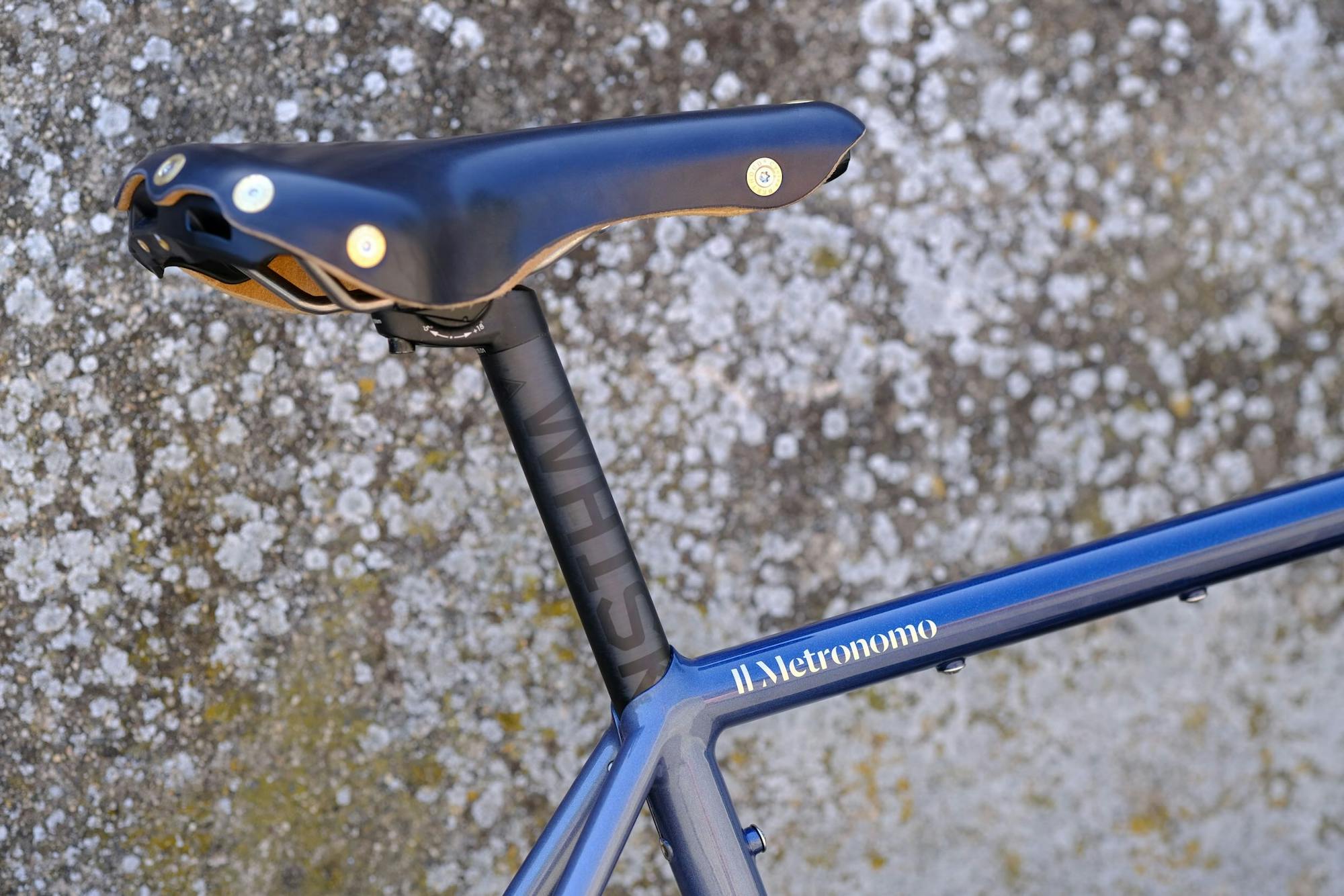
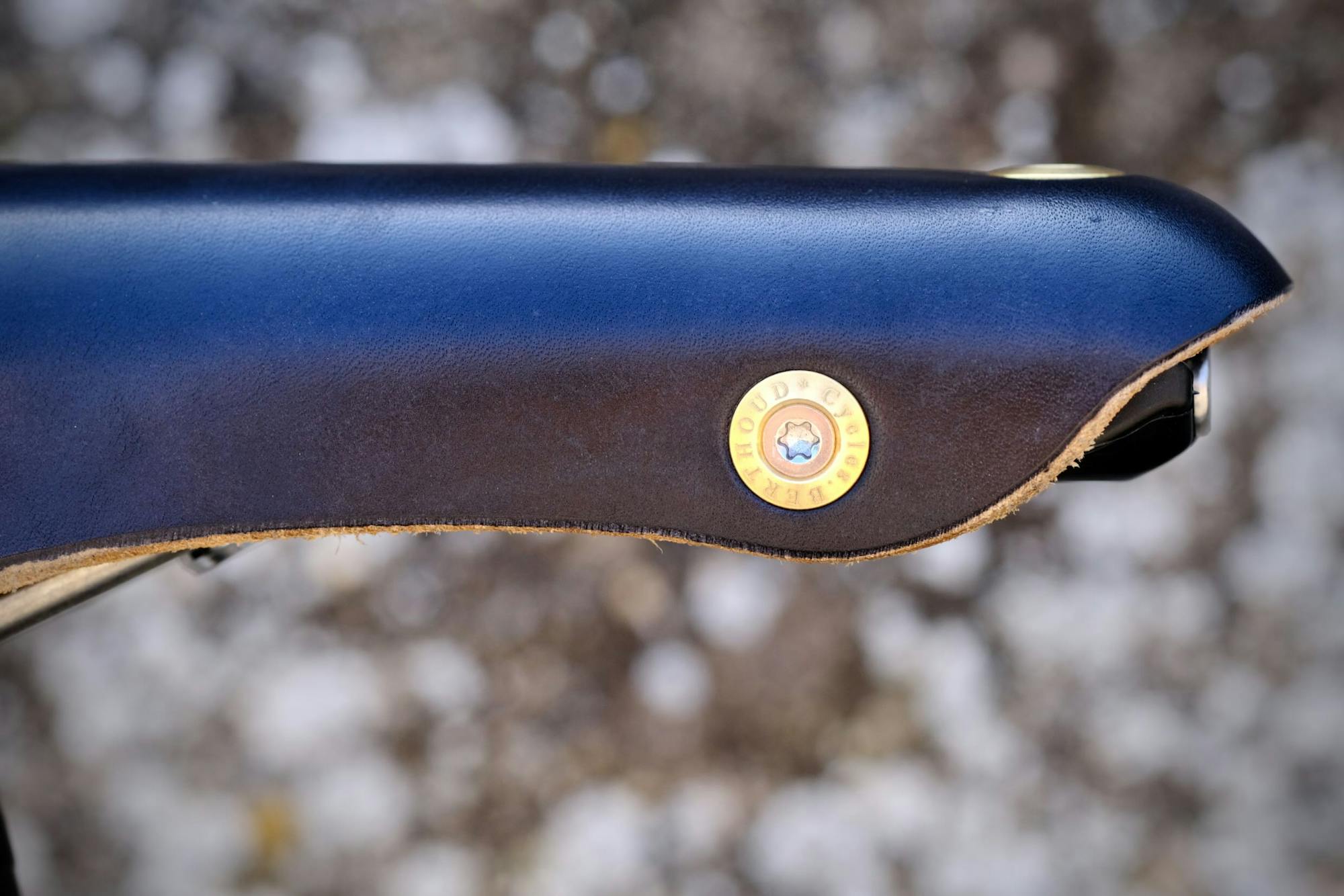
To complete this iconic project for a steel randonneuse to run a Paris-Brest-Paris, the only conceivable material for the saddle is leather. We are fortunate to have exceptional manufacturers in France, and often work with Berthoud or Idéale. Here we've fitted a Berthoud Aravis, whose modern lines blend perfectly with the profile of the bike.
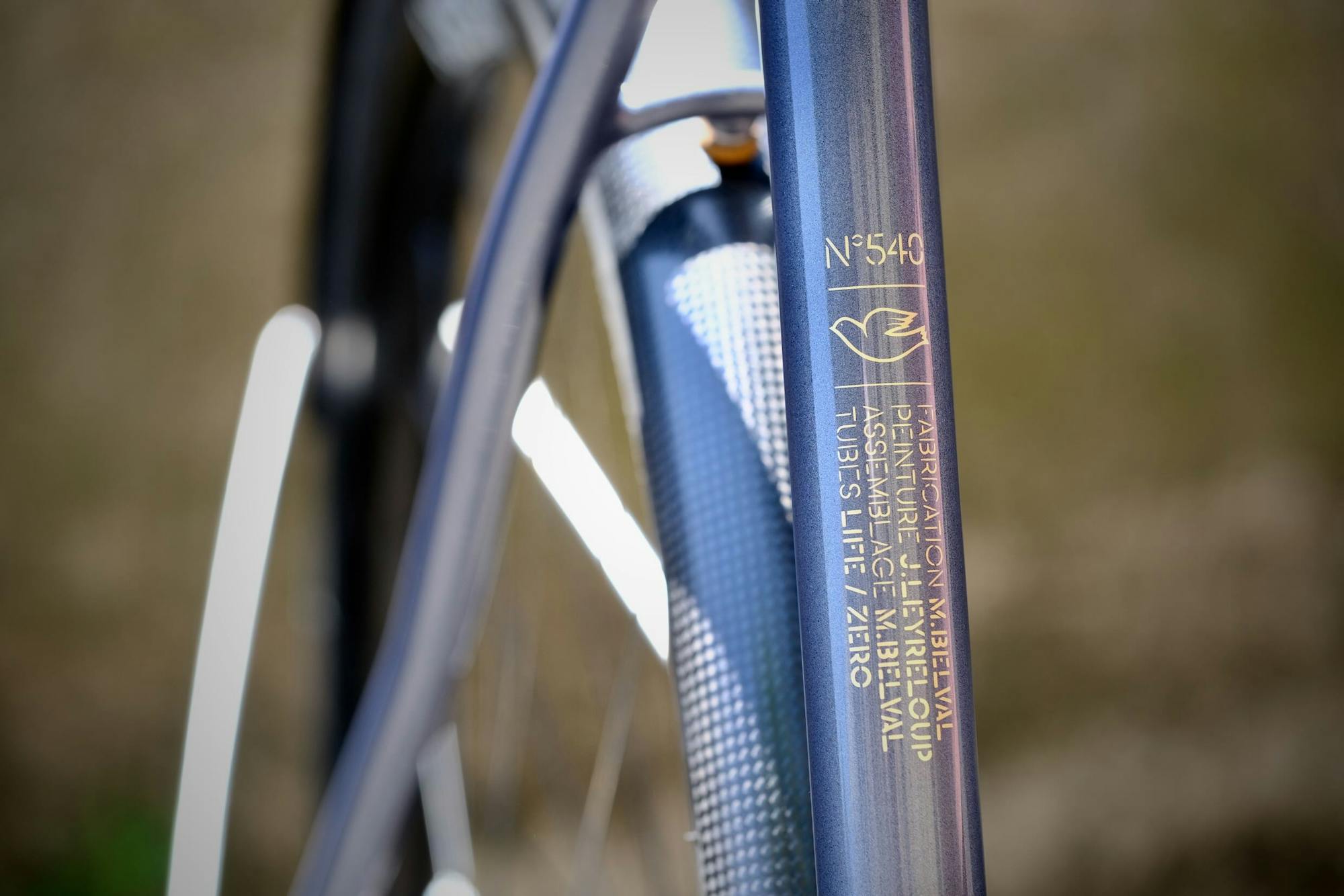
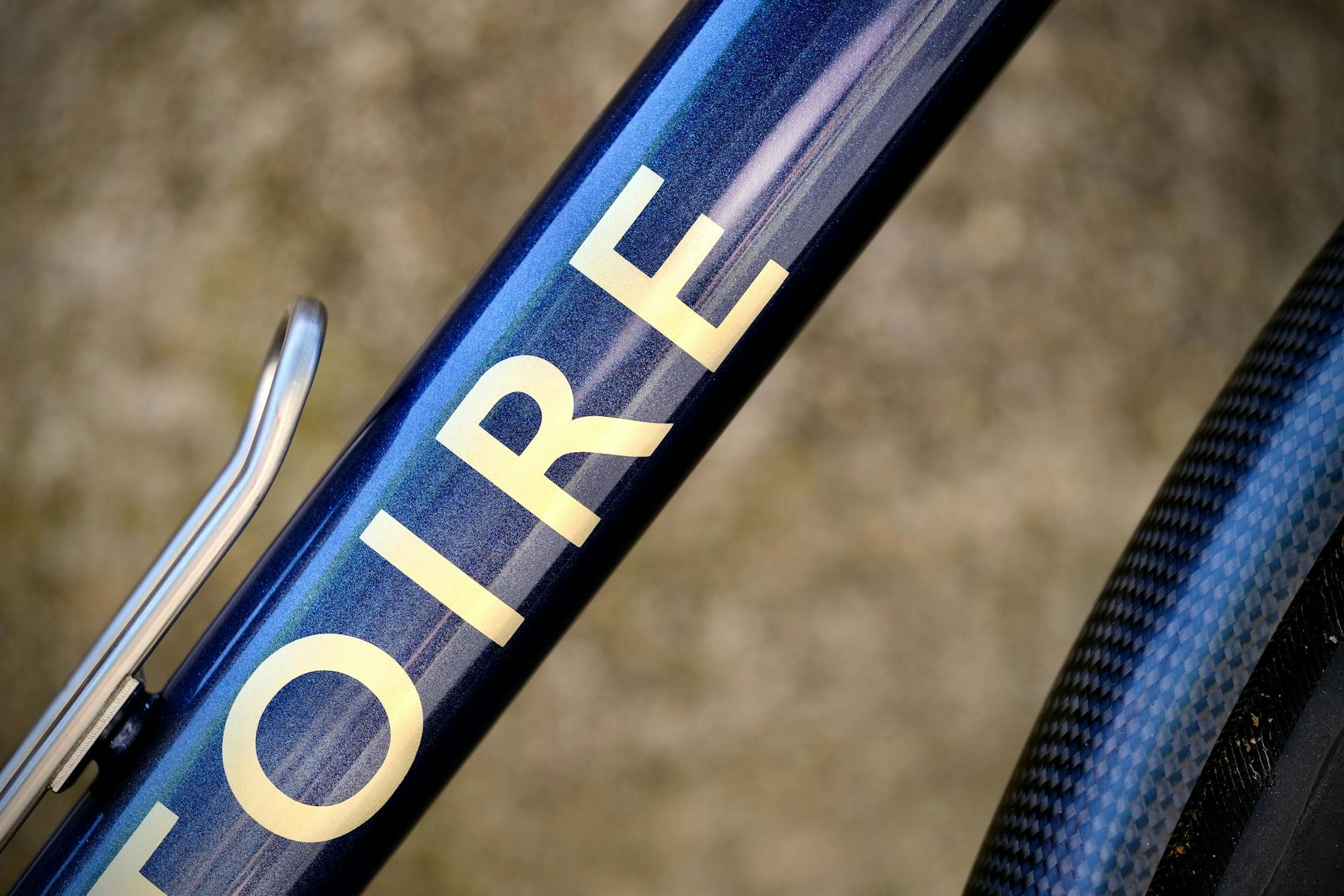
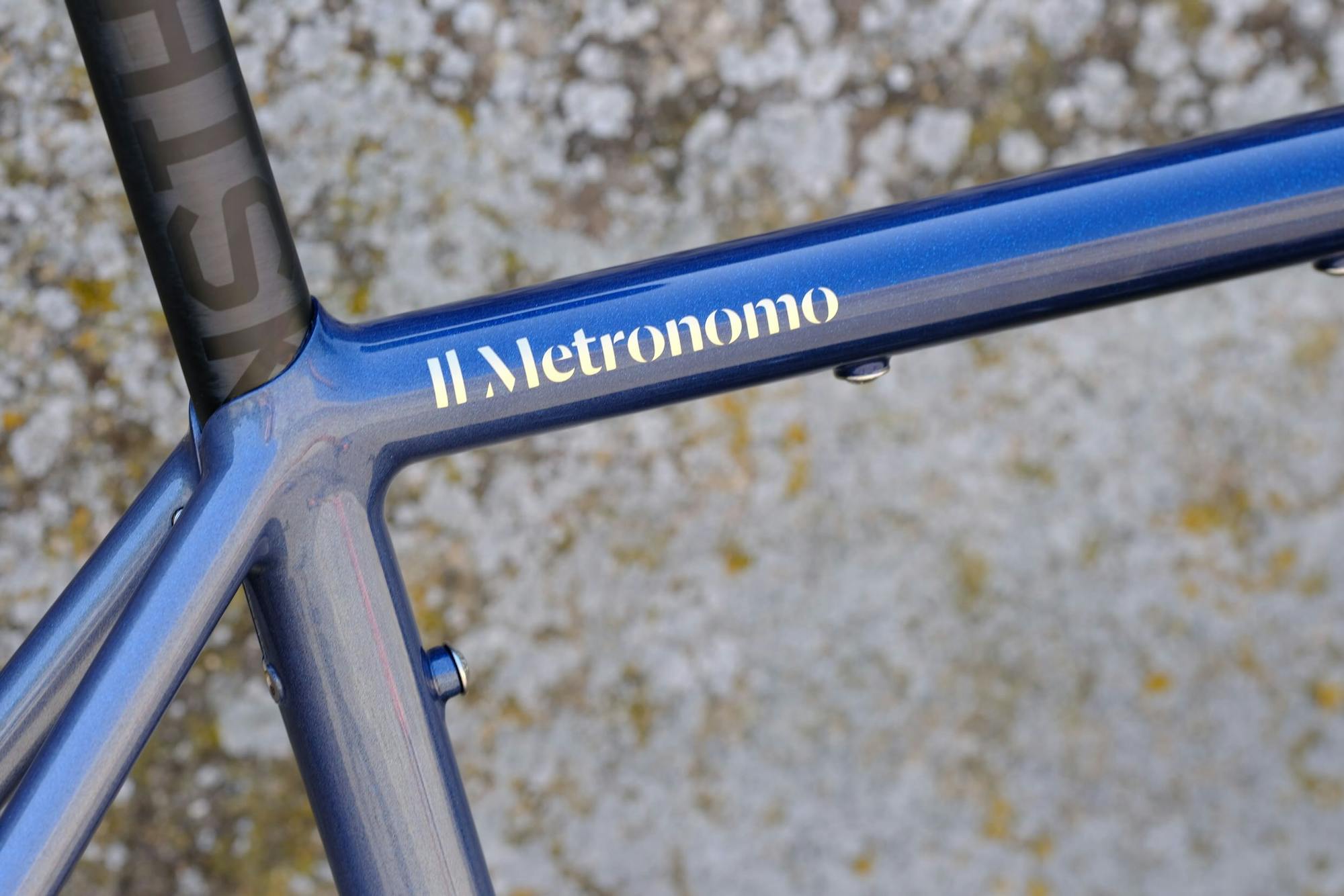
The bike is painted in shades of blue, giving it a discreet look. A few small logos and custom markings requested by Philippe make it an extremely personal machine for its lucky owner.

The realization of such a complex project was only possible thanks to lengthy discussions between Philippe and the entire Victoire team. His initial idea was more traditional, and the time spent before and during the postural study resulted in a machine corresponding 100% to his use and morphology.
During our initial discussions with Julien, I told him of my desire for a lightweight, double chainring tourer with 32 tires, in order to maintain acceptable performance on my long rides. In the end, the machine delivered was fitted with a 38-tooth single chainring, a 13-sprocket cassette and half-balloon 650B tires in 38-section. To be quite honest, I don't regret having followed Julien's advice, as he was able to find the right arguments to convince me.
After taking delivery of his bike a few weeks before his seventh Paris-Brest-Paris, Philippe has since ridden many kilometers on it, and is now preparing for his next adventures.

From the very first turns of the wheel, I was blown away by both the responsiveness and comfort of my new bike. Since then, I've ridden it for miles on end with disconcerting ease and, above all, without any aches or pains at the finish line, thanks to the tires that perfectly absorb all vibrations when the road surface is of poor quality. In short, it's exactly the companion bike that "Il Metronomo" dreamed of, to accompany him on his long journeys at a steady, regular pace, without any bumps and full of wisdom. Many thanks to the entire Cycles Victoire team for perfectly translating my expectations into this superb marvel!
